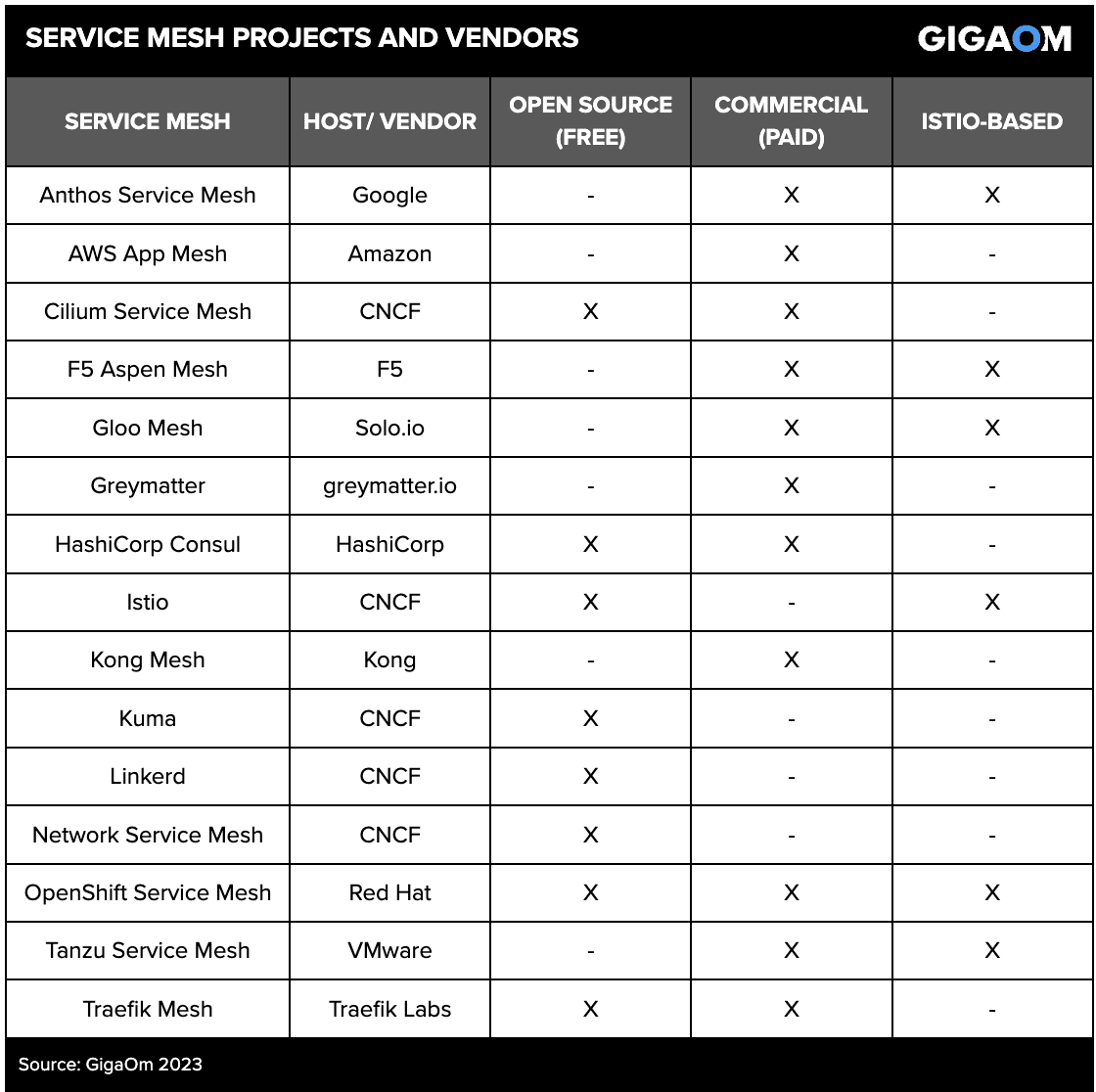Table of Contents
- Summary
- Market Categories and Deployment Types
- Key Criteria Comparison
- GigaOm Radar
- Vendor Insights
- Analyst’s Take
- Methodology
- About Ivan McPhee
- About GigaOm
- Copyright
1. Summary
Playing an essential role in cloud-native development, a service mesh enables fast, reliable, and secure communications between microservices. Unlike other systems for managing intra-service communications, a service mesh is a dedicated infrastructure layer fully integrated within the application. Implemented either alongside the workload as a sidecar proxy or integrated directly into the service or platform itself, a service mesh eliminates the complexity, fragmentation, and security vulnerabilities of repeatedly coding service-to-service communications by outsourcing the management of requests to an out-of-process application.
As this is an emerging technology undergoing rapid innovation, choosing a service mesh requires decision makers to carefully evaluate the landscape, considering the additional complexity, latency, and resource consumption involved. With various open-source and commercial vendors targeting a broad range of application environments and deployment options, this GigaOm Radar report provides an overview of the service meshes offered by open-source projects and vendors’ landscape-based table stakes, key criteria, and evaluation metrics. Figure 1 lists the service meshes included in this report and their acquisition options.
Figure 1. Service Mesh Projects and Vendors
Note: Providing governance for open-source, vendor-neutral cloud-native projects, the Cloud Native Computing Foundation (CNCF) hosts several community-driven open-source projects with varying maturity levels: sandbox (early stage), incubating (stable), or graduated (widely deployed in production environments).
With different service mesh options and a rapidly evolving landscape, choosing the best service mesh for your organization depends on your use cases, existing software stack, architectural choices, and in-house capabilities. In addition, your internal resources and skill sets will influence your decision on whether you adopt a lightweight, developer-friendly service mesh or a full-featured solution requiring professional services.
This GigaOm Radar report highlights key service mesh projects and vendors and provides the information IT decision-makers need to select the best fit for their business and use case requirements. The corresponding GigaOm report “Key Criteria for Evaluating Service Mesh Solutions” describes in more detail the capabilities and metrics used to evaluate vendors in this market.
This is our third year evaluating the service mesh space in the context of our Key Criteria and Radar reports. All solutions included in this Radar report meet the following table stakes—capabilities widely adopted and well implemented in the sector:
- Dedicated infrastructure layer
- Service-to-service authentication
- Control plane configuration
- Control plane telemetry
How to Read this Report
This GigaOm report is one of a series of documents that helps IT organizations assess competing solutions in the context of well-defined features and criteria. For a fuller understanding, consider reviewing the following reports:
Key Criteria report: A detailed market sector analysis that assesses the impact that key product features and criteria have on top-line solution characteristics—such as scalability, performance, and TCO—that drive purchase decisions.
GigaOm Radar report: A forward-looking analysis that plots the relative value and progression of vendor solutions along multiple axes based on strategy and execution. The Radar report includes a breakdown of each vendor’s offering in the sector.